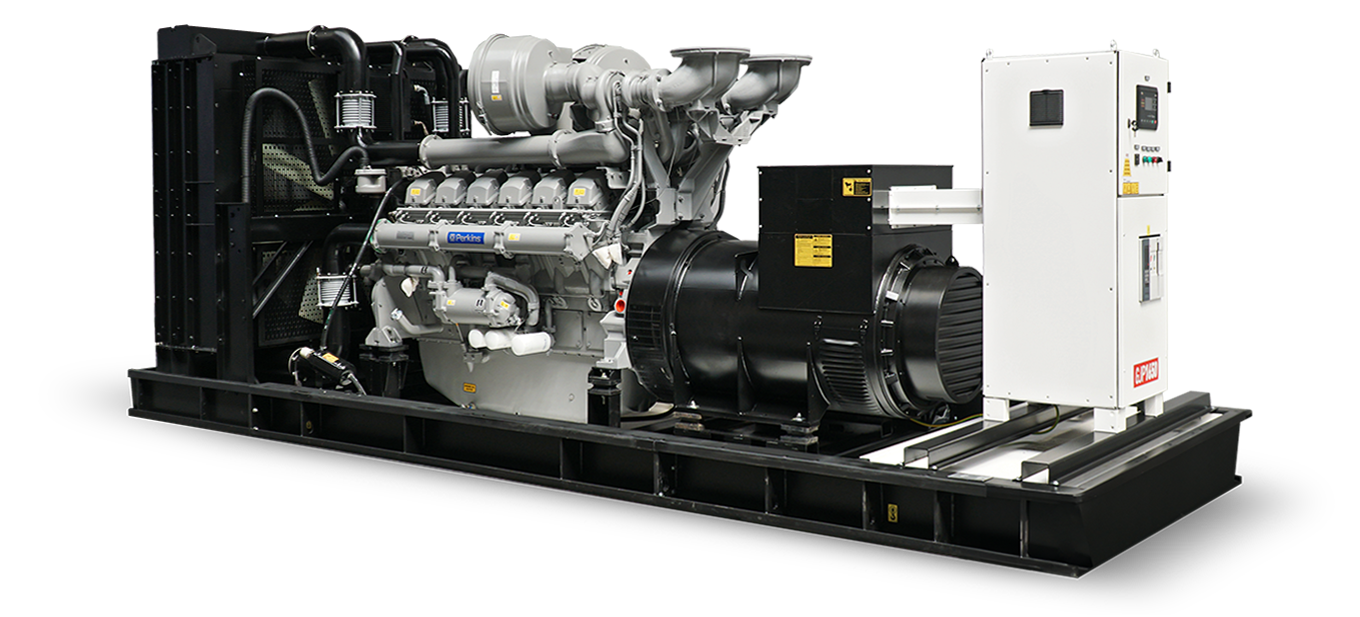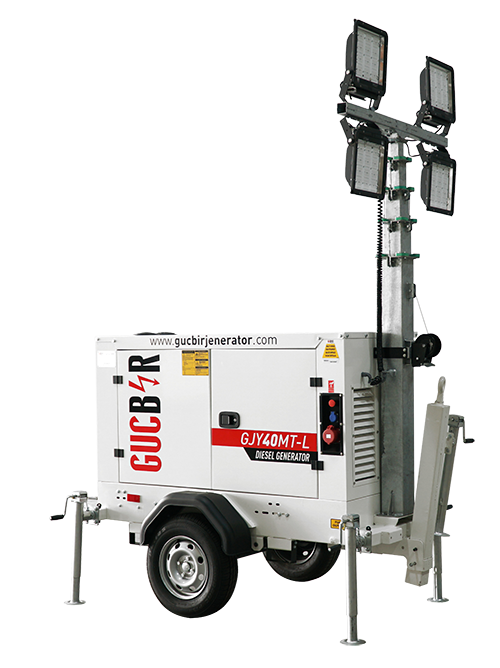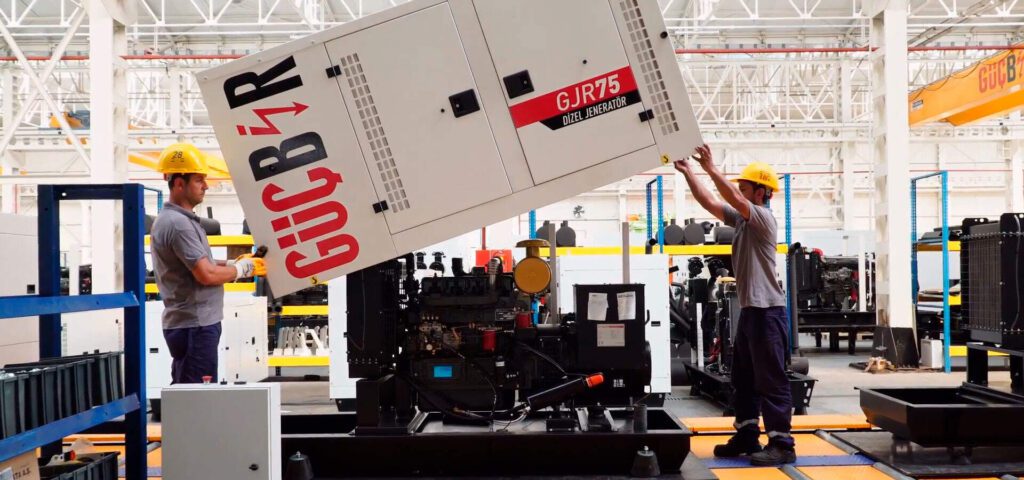The first thing you need to do when purchasing a generator is to determine the power you need.No matter what power you are interested in, such as prime or standby, if your generator is not strong enough to meet the power you need, this may cause damage to your generator. The process of determining the exact power of a generator requires many factors and investigations.
Criteria such as single-phase, three-phase, kW, kVA, prime and standby may cause confusion when making a choice.This article is designed to avoid this confusion and discuss the key issues to know regarding the process of determining generator power. Although it does not provide as detailed technical information as a certified electrician, it enlightens the user on some important key points.
Generator Power Range: With the developments in the field of electrical engineering, the generators produced cover a wide power range.While industrial generators are in the 50 kW-3 MW power range, generators in the 5kW – 50kW power range are common for small office and home use.
Size of Generator: Many people use standby (continuous, uninterrupted) electrical power; He thinks that he can afford it with a small generator since it does not need to work continuously.Unfortunately, this is one of the most common mistakes made when purchasing a generator, and in addition to damage to your new generator, it can also cause damage to the equipment in the facility it feeds and the halt of work connected to these equipment. The key point to remember here is; A generator with a higher power than the required power should be preferred.
How to Determine the Correct Size Motor or Generator?: Although there is no substitute for the exploration and calculations of a certified electrician, the following items can be a start to get you on the right track:
Know your needs well: Going to a dealer and buying the best or cheapest generator available is not the right approach.It is always better to determine in detail the electrical power you need before making a choice.You can do this in the following ways:- Make a list of the items that need to be fed with the generator.
– Note the starting and operating powers of the relevant items.
– Calculate the total power requirements in kVA or kW.
How to Determine Starting and Working Power? Determining the starting and working powers of the devices that the generator will feed is very important for accurate power requirement calculation.Normally, you can find this type of information on the label on the device or in the user manual.
Ampere to Watt Conversion: You’ll often see the power requirements of devices in amperes.To convert the power requirement from amperes to watts, you can make the following calculations:
For resistive load: Watt = ampere x volt
For reactive load: Power = (amps x volts) x power factor
Power Consumption Graph: If you lose the user manuals of the electrical equipment you use, you may not be able to access the power consumption values.You can find the approximate power values of commonly used devices in the power consumption table below.In this table you can easily see that the starting and operating powers are different.
| Power Consumption Table |
| This table shows how power ratings vary between different types of electrical appliances. The values reflected in this table are not a definitive guide to calculating your power requirements. For the most accurate calculation, consult the user manual of each device or a professional electrician. |
| substances | Starting Power (W) | Working Power (W) |
| Circular Saw | 2.400 | 1.200 |
| Drill | 1.800 | 720 |
| Kenar kesici | 2.400 | 960 |
| Electric Saw | 2.400 | 1.200 |
| Electric Lawn Mower | 4320 | 1.440 |
| Electric Pressure Washer | 3600 | 1.200 |
| Electric Lawn Machine | 1.500 | 600 |
| Carving Saw | 1.800 | 720 |
| spiral saw | 2.100 | 840 |
| Electric Sander | 1.800 | 600 |
| Paint Sprayer | 1.080 | 360 |
| Planya | 2.400 | 960 |
| Router | 1.500 | 600 |
| Water Pump | 3000 | 1.000 |
| Wet/Dry Vacuum | 2.500 | 888 |
| Vinç | 5400 | 1.800 |
| Fırın Fanı, gaz/fuel oil fırın | ||
| 1/8 horsepower (hp) | 500 | 300 |
| 1/6 horsepower (hp) | 750 | 500 |
| 1/4 horsepower (hp) | 1.000 | 600 |
| 2/5 horsepower (hp) | 1.400 | 700 |
| 3/5 horsepower (hp) | 2.350 | 875 |
| Central Air Conditioning | ||
| 10.000 BTU | 2.200 | 1.500 |
| 20.000 BTU | 3300 | 2.500 |
| 24.000 BTU | 4950 | 3800 |
| 32.000 BTU | 6500 | 5000 |
| 40.000 BTU | 6700 | 6000 |
| 1/4′ Drill | 300 | 300 |
| Jogging Saw | 300 | 300 |
| Electric Lawn Machine | 500 | 500 |
| Belt Sander | 1.000 | 1.000 |
| Disk Sander | 1.200 | 1.200 |
| Saw | 1.200 | 1.200 |
| Spiral Saw | 3100 | 1.560 |
| 12′ Concrete Cutter | 3600 | 1.800 |
| 7 1/4′ Saw | 3000 | 1.500 |
| Disc Grinder | 4000 | 2.000 |
| Air Compressor (Average) | 4000 | 2.000 |
Different methods of calculating power: There are several different ways to calculate power requirements, depending on the type and number of devices and the usage schedule of the generator:
– With one engine running.
– When multiple engines are operating simultaneously.
– While there are no electric motors.
Advantages of choosing a suitable power generator: So far, you have gotten the idea of choosing a suitable generator according to your needs, here are some of the benefits gained by following these processes:
– Elimination of unexpected system errors,
– Elimination of shutdowns due to overload,
– The generator has a longer life,
– Performance guarantee
– Proper and trouble-free maintenance
– Increased system lifespan
– Ensuring personal security
Where to buy, the role of service providers and sales points: Since you will be using the generator for continuous or emergency electricity needs (perhaps in a crisis), the choice of the company you will buy from is an important aspect that should not be overlooked.It is necessary to examine all issues such as how many years of experience the seller has and whether he/she provides service.







